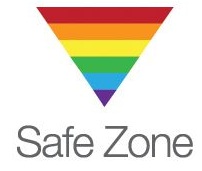What is EMDR?
EMDR stands for Eye Movement Desensitization and Reprocessing. When a traumatic experience happens, such as the loss of a loved one, a sexual assault, or the sudden loss of a job, the memory of the trauma is stored with all of the negative emotions, body sensations, thoughts, and feelings that were experienced in the moment. Over time, these memories cause distress, which can look like anxiety, flashbacks, nightmares, avoidance, and feelings of being overwhelmed. The trauma starts to affect that way that you see the world, yourself, and others, and it can impact how you relate to others in your daily life.
EMDR can help you to feel more in control. It not only is used to treat and reduce trauma related symptoms, but it can also be used to treat anxiety, stress, performance anxiety, grief, and many other challenges. This highly researched intervention uses eye movement or buzzing tappers to help you to access and process through the thoughts, feelings, and sensations tied to a traumatic memory in a way that gives you control. I use a specific protocol to best guide you through your processing, and I am always attuned to how you’re feeling in the moment.
EMDR therapy gives you more skills than what you came in with, so you can expect to learn some tools to help you to feel more grounded when you are overwhelmed. You will also develop new insights into behavior patterns or negative thoughts that have impacted you, so that you can develop a healthier view of yourself and the world.
How Does EMDR Work for Kids and Teens?
EMDR helps kids to process upsetting memories in a safe and collaborative way. EMDR helps the brain to make sense of traumatic experiences, so that negative feelings, thoughts, and behaviors are not controlling your child—they feel much more in control. Kids will also either follow eye movement or hold buzzing tappers to help in accessing and processing through the thoughts, feelings, and sensations tied to an upsetting memory in a way that gives them control.
I teach your child or teen skills to manage difficult emotions and help them to express emotions in a healthier manner. I make EMDR processing kid and teen friendly by including visual cues for scaling how upsetting a memory is, and for identifying negative thoughts tied to the upsetting experience.
Check out this video created by the National Center for PTSD explaining EMDR.
Please also check out the EMDR International Association website for more information about EMDR. I am more than happy to answer your questions in your free 15 minute consultation call. Information for this page was borrowed from EMDRIA and from the National Center for PTSD.


